- Soufflé cup: A small paper or plastic cup used to administer solid oral medications (Figure 3-1). Solid oral medications, such as tablets and capsules, can be administered with a soufflé cup.
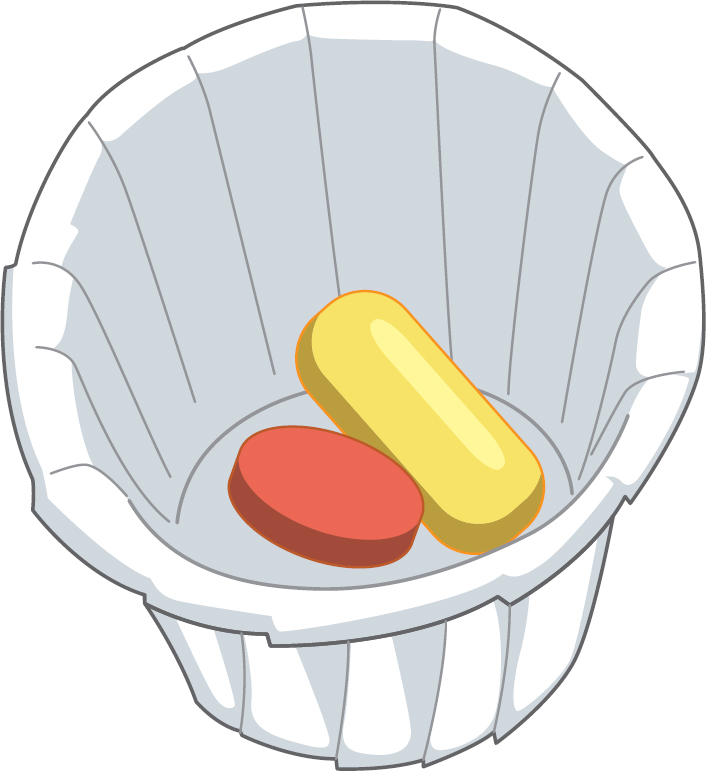
An illustration depicts a tablet and a capsule in a souffle cup.
- Medicine cup: A plastic measuring cup used to administer liquid oral medications. Medicine cups are open containers marked with household and metric calibrations (Figure 3-2). Liquids poured into an open container may form a meniscus, or concave curve, in the upper surface of the liquid (Figure 3-3). Medicine cups should be placed on a flat surface, and liquids should be poured at eye level, measured at the bottom of the meniscus (Figure 3-4). Medicine cups are calibrated in 2.5 mL increments up to 10 mL and in 5 mL increments up to 30 mL. A medicine cup shows milliliter and teaspoon calibrations on one side and ounce calibrations on the other side.
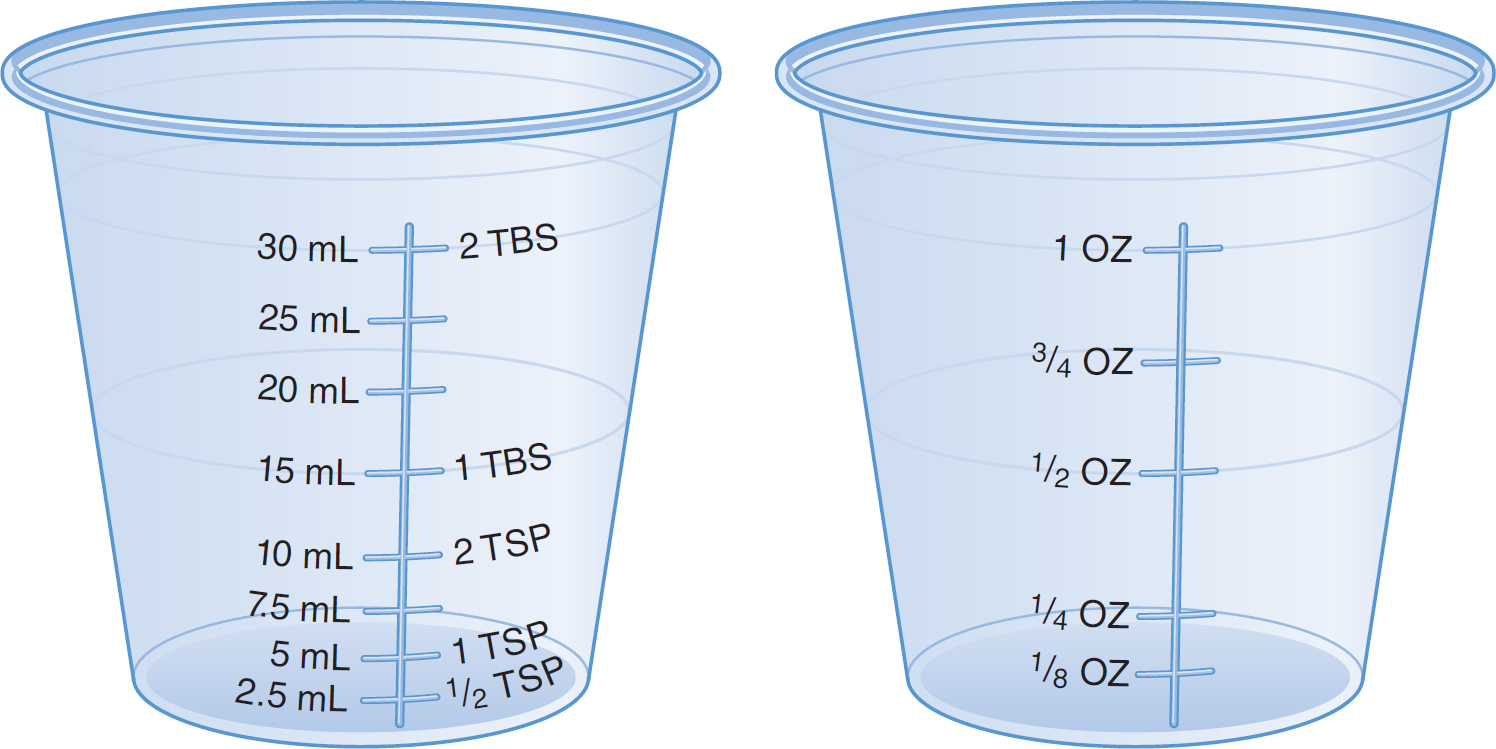
An illustration depicts a cup on the left and a cup on the right.
2.5 milliliters equivalent to half a teaspoon, 5 milliliters equivalent to 1 teaspoon, 10 milliliters equivalent to 2 teaspoons, 15 milliliters equivalent to 1 tablespoon, 20 milliliters, 25 milliliters, and 30 milliliters equivalent to 2 tablespoons are on the left cup. One-eighth ounce, one-fourth ounce, half ounce, three-fourth ounce, and 1 ounce are marked on the right cup.
This liquid medication, in the amount of 20 mL, is measured at the bottom of the meniscus.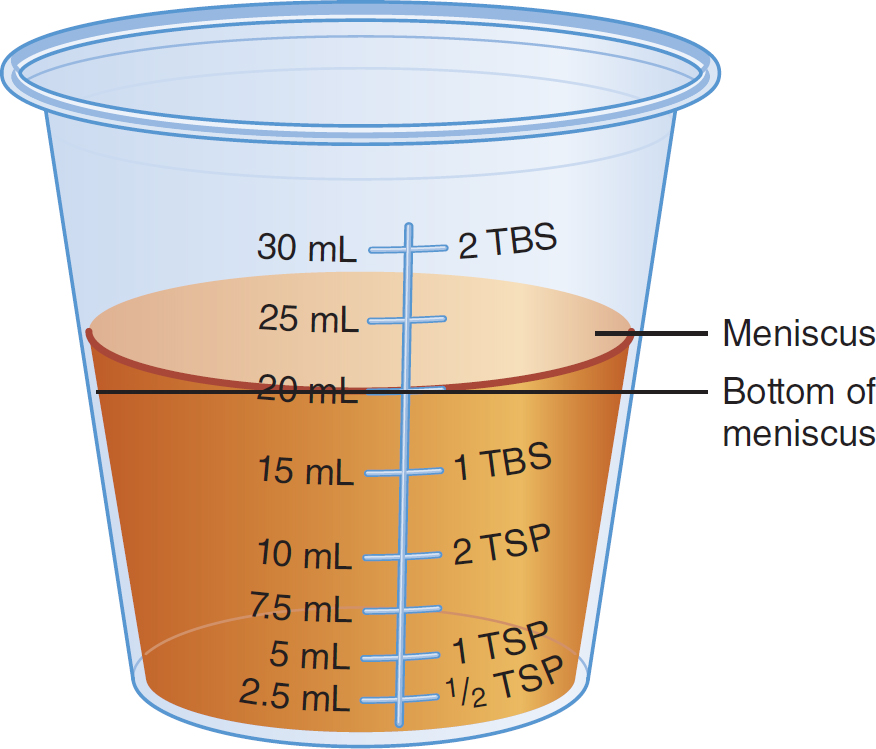
An illustration depicts a cup with markings in milliliters, teaspoons, and tablespoons.
2.5 milliliters equivalent to half a teaspoon, 5 milliliters equivalent to 1 teaspoon, 10 milliliters equivalent to 2 teaspoons, 15 milliliters equivalent to 1 tablespoon, 20 milliliters, 25 milliliters, and 30 milliliters equivalent to 2 tablespoons are on the cup. The meniscus of a liquid and the bottom of meniscus measures 20 milliliters.
To accurately measure liquid medication, the nurse places the medicine cup on a flat surface and pours the prescribed amount at eye level.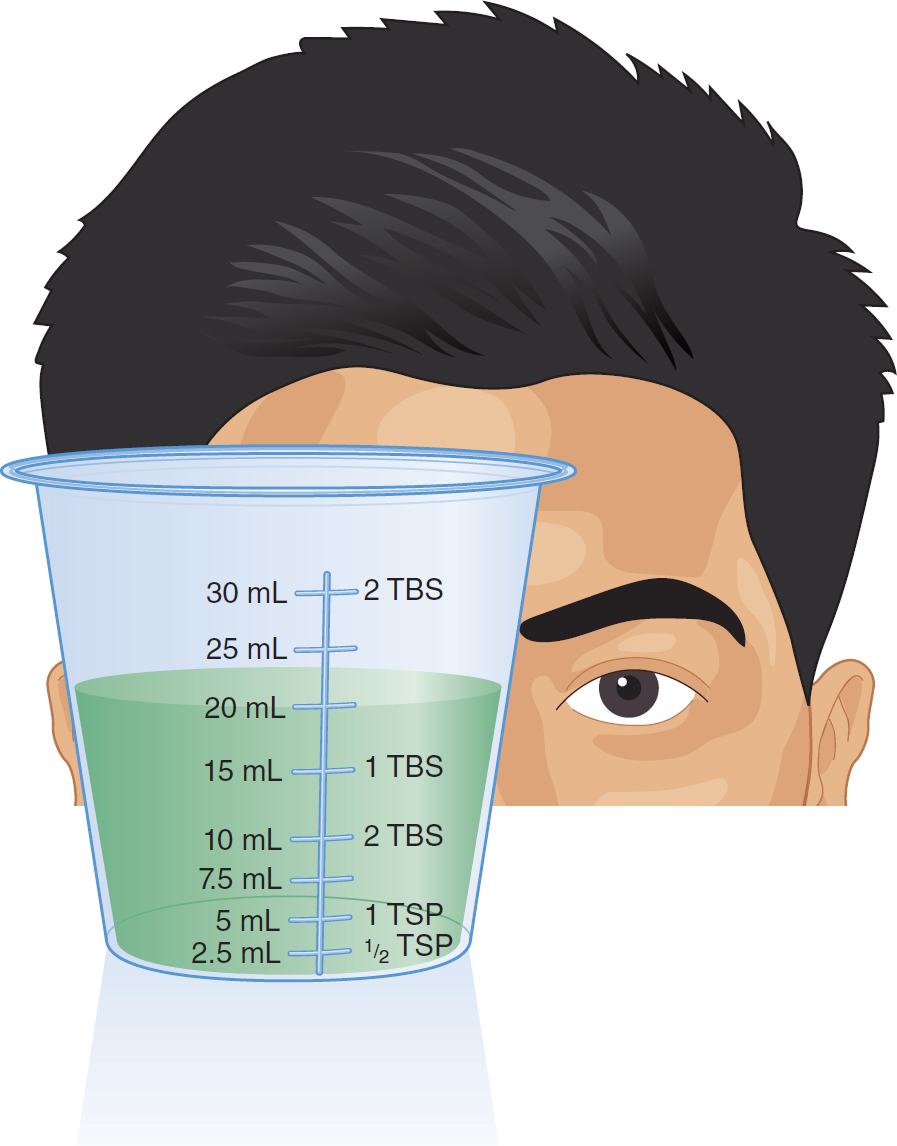
An illustration depicts a cup with markings in milliliters, teaspoons, and tablespoons along with the eye level of a boy.
2.5 milliliters equivalent to half a teaspoon, 5 milliliters equivalent to 1 teaspoon, 10 milliliters equivalent to 2 teaspoons, 15 milliliters equivalent to 1 tablespoon, 20 milliliters, 25 milliliters, and 30 milliliters equivalent to 2 tablespoons are on the cup placed on a flat surface and at eye level.
- Dropper: A device used to deliver small quantities of liquid medication. Droppers have different sized openings that produce different quantities of medication with each drop. Because drop size varies, medications, such as children's vitamins, that are administered via dropper are often packaged with the device to ensure accurate dosing. Some droppers are calibrated with milliliter markings (Figure 3-5). To avoid dosage errors, droppers should not be interchanged but should be used only with the medication with which they are packaged. Because there is no standard drop size, droppers have varying calibrations and, therefore, should be used to measure only the medication with which they have been packaged.
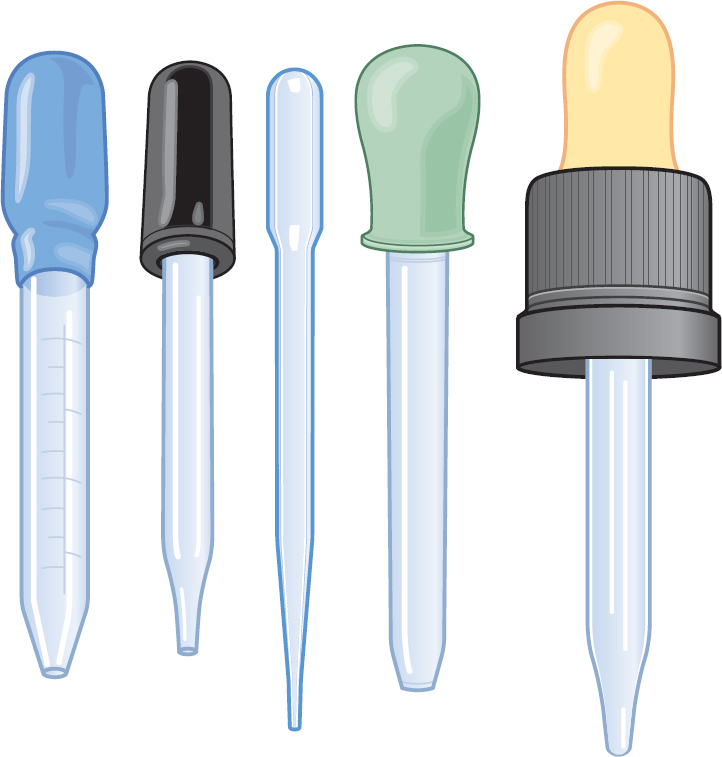
An illustration depicts 5 droppers in various sizes with different-sized openings and different markings.
- Calibrated spoon: A device calibrated in 2.5 mL increments and fractional teaspoons that has a capacity of 10 mL (2 teaspoons [t]). Designed for pediatric medication administration, some calibrated spoons are shaped like animals and have "legs" that allow the device to sit sideways without spilling (Figure 3-6). This "Kyle the Crocodile" medicine spoon appeals to children.

An illustration depicts a calibrated spoon shaped like a crocodile with legs.
The markings on the spoon in milliliters, range from 1 to 10, in increments of 1, and teaspoon, ranging from 0.25 to 2, in increments of 0.25.
Safety Tips for Household Medication Administration
|
- Oral syringe: Used to deliver 5 to 10 mL of liquid and available in two sizes, 5 mL and 10 mL. Calibrated in tenths of a milliliter and fractional teaspoon measurements, oral syringes are designed with specific features to differentiate them from the syringes used for injections.
- An eccentric or off-center tip alerts the nurse that a needle should not be attached to this syringe (Figure 3-7). This oral syringe has an eccentric (off-center) tip that differentiates it from a syringe to be used for injections.

An illustration depicts a calibrated 10-milliliter oral syringe in upright position, without a needle, with medication up to 2 units below 7. Each milliliter is partitioned into 5 parts.
- Some oral syringes are clear and labeled "for oral use only" to distinguish them from syringes used for injection (Figure 3-8). Oral syringes are distinguished from the syringes used for injection by tinted color or a label on the barrel stating, "for oral use only."
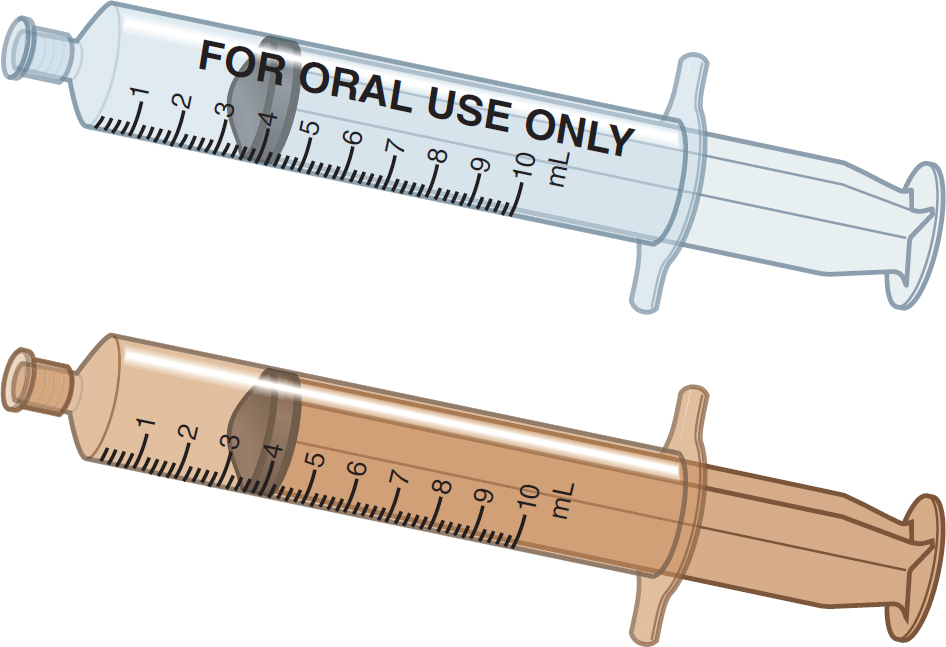
An illustration depicts 2 oral 10-milliliter syringes without needles, each unit of which is partitioned into 5 equal parts. Text on one of the syringes reads, For oral use only and the other in tinted color.
- An eccentric or off-center tip alerts the nurse that a needle should not be attached to this syringe (Figure 3-7). This oral syringe has an eccentric (off-center) tip that differentiates it from a syringe to be used for injections.
To determine the appropriate device for administration of medication:
For example, when necessary to administer 9 mL of oral medicine, the nurse knows that an oral syringe, calibrated spoon, and medicine cup all have the capacity to hold 9 mL. However, because a medicine cup and some calibrated spoons do not have a 9-mL calibration, the nurse should select an oral syringe for administration of this medication. |
LEARNING ACTIVITY 3-1 Select the appropriate device to deliver the amount of medication indicated in questions 1–4. Select all that apply.